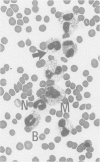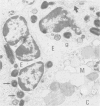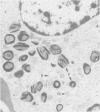Abstract
The clinical, clinicopathological and pathological findings in three cats with hypereosinophilic syndrome are described. The cats chosen for the study had marked eosinophilia and evidence of tissue infiltration by eosinophils. Necropsies were performed on two cats, biopsy and blood samples were provided for the third cat. At necropsy, there was diffuse reddening of femoral bone marrow with ulceration and thickening of the duodenum. The livers had an enhanced lobular pattern with multiple, white, 1-3 mm nodules throughout the parenchyma. One cat had splenomegaly and the other had several enlarged, white, firm lymph nodes. Histopathologically, there was eosinophil infiltration of intestine, lymph nodes, liver, spleen, adrenal medulla and beneath the endocardium. Ultrastructurally, the eosinophils from lymph node and bone marrow of cat II were morphologically normal. The rigid criteria for eosinophilic leukemia were not fulfilled by these cases and the etiology of the eosinophilia in each case is not known. Possible pathogenic mechanisms are discussed.
Full text
PDF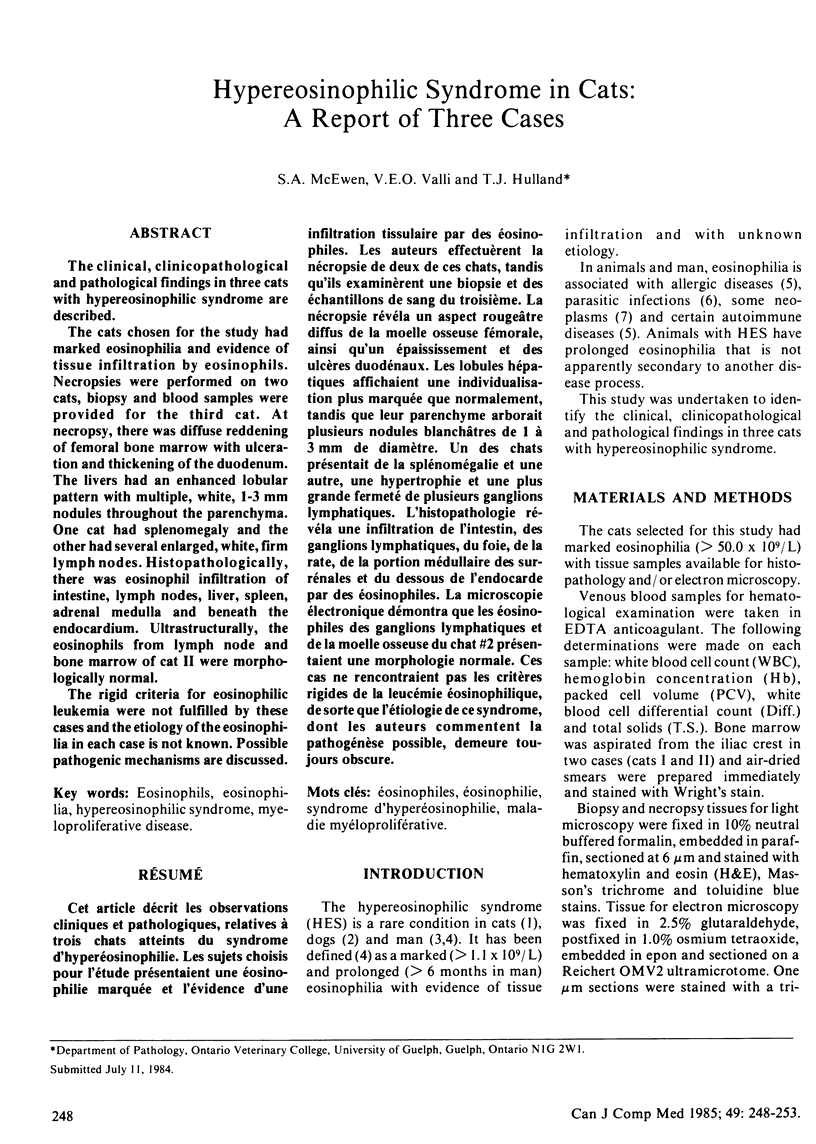
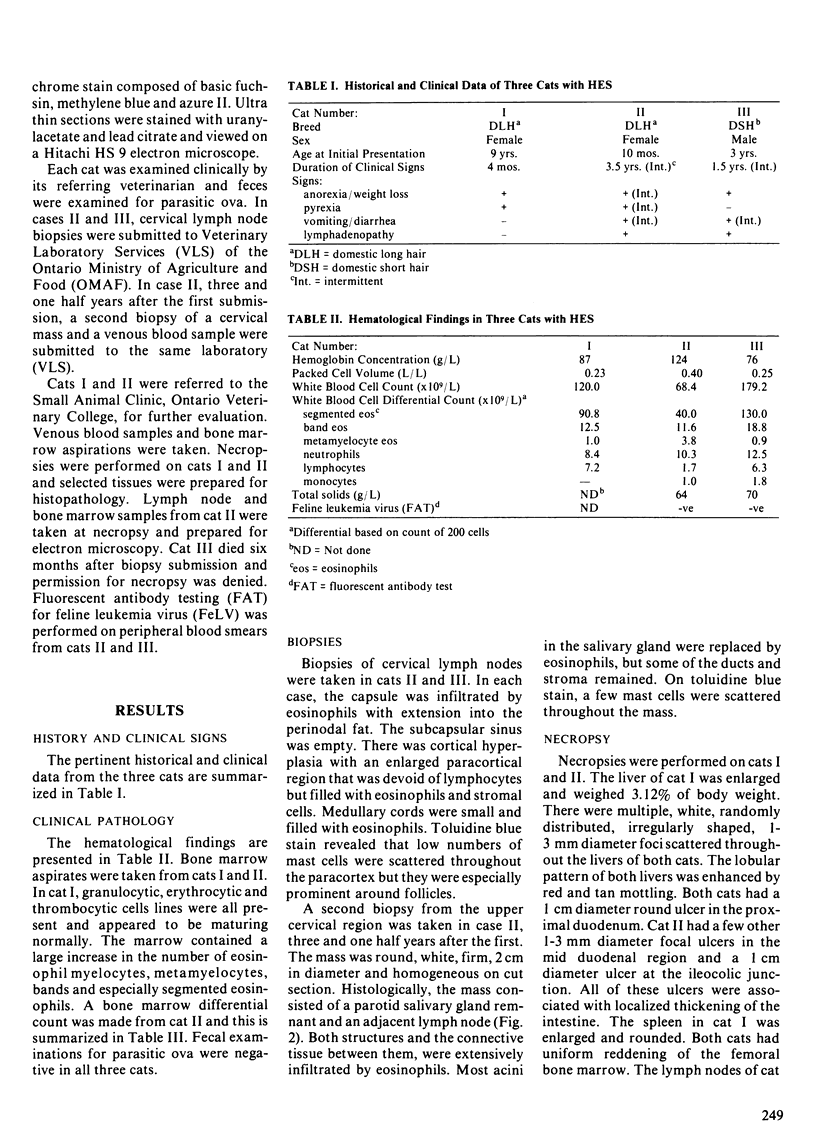
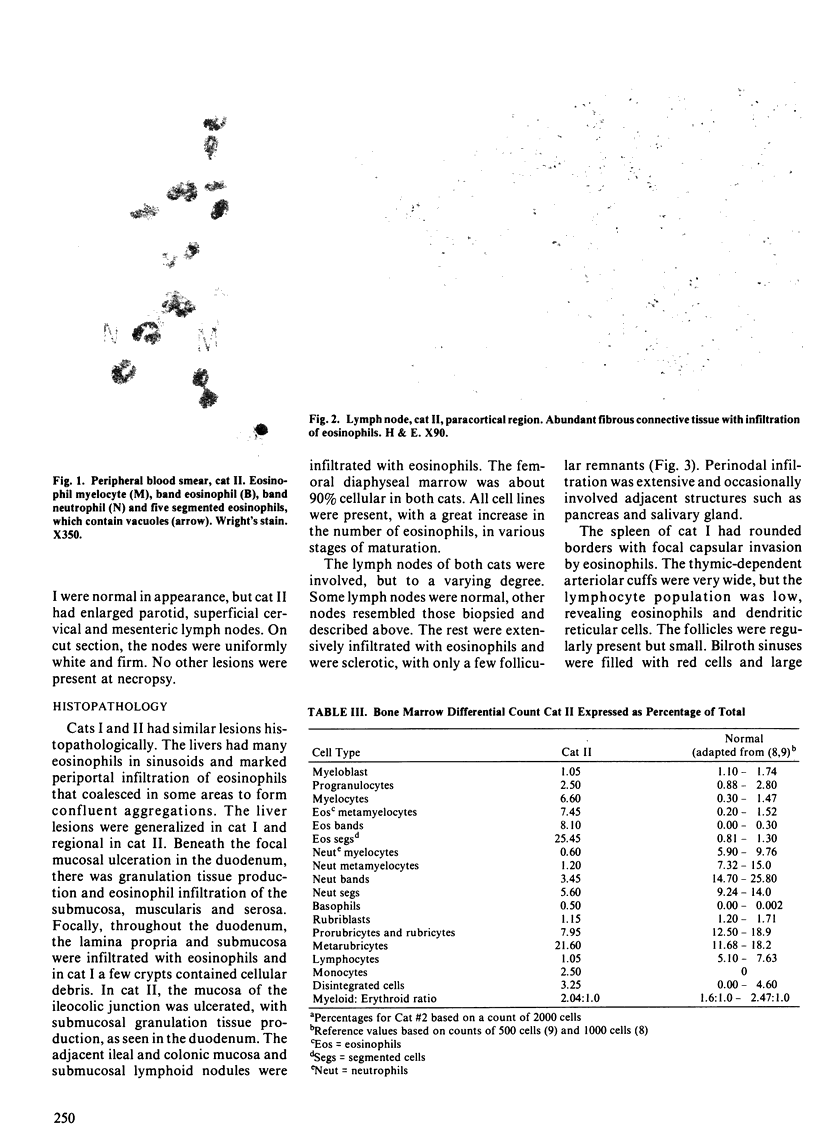
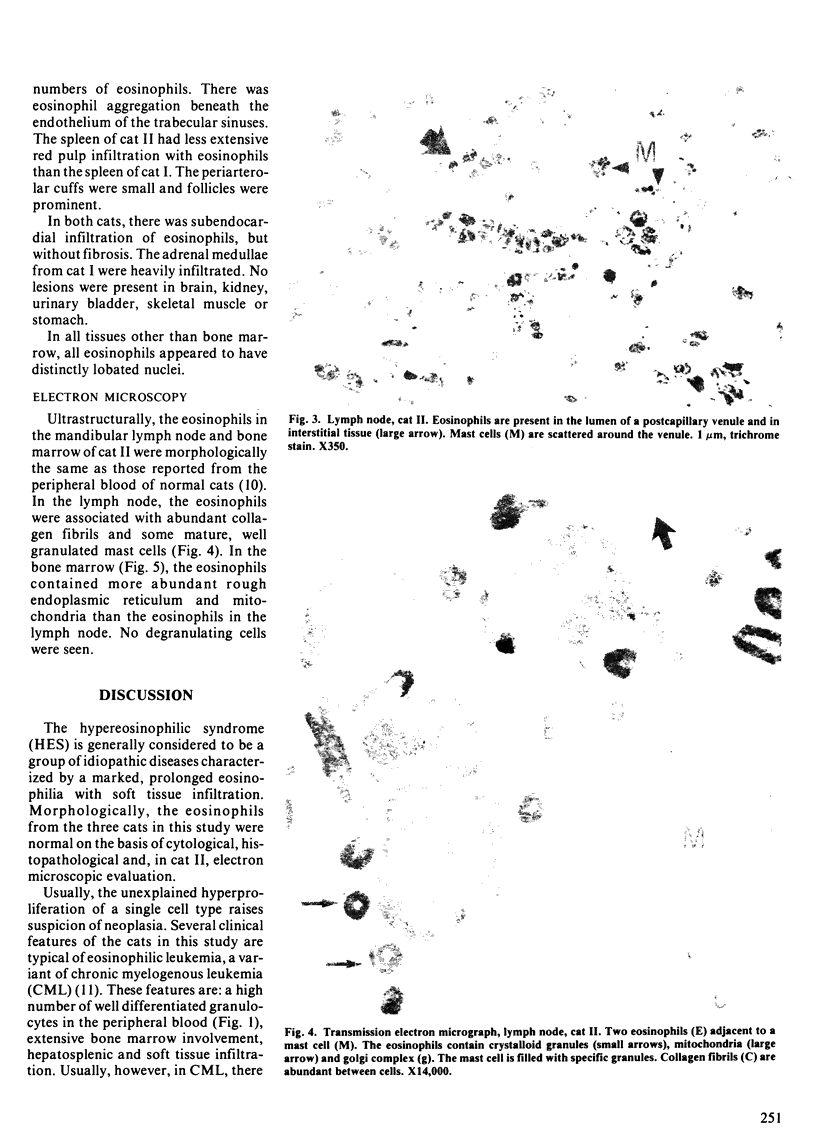
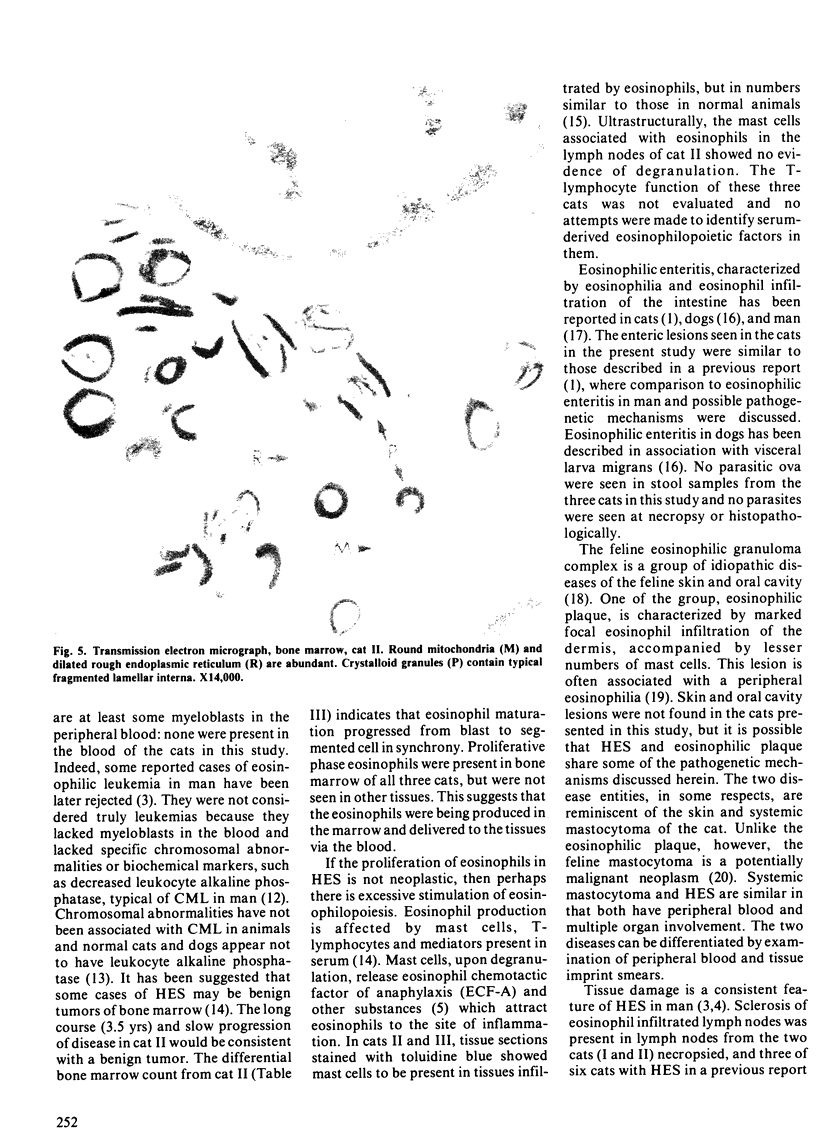
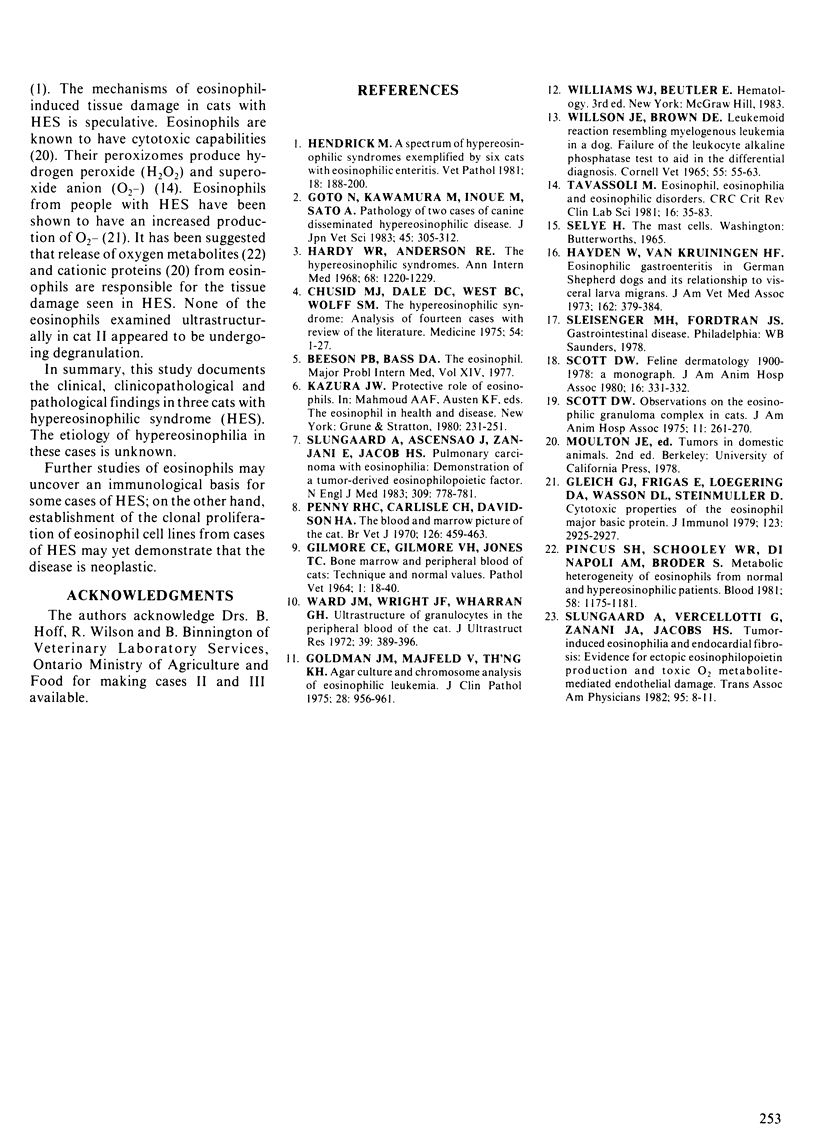
Images in this article
Selected References
These references are in PubMed. This may not be the complete list of references from this article.
- Chusid M. J., Dale D. C., West B. C., Wolff S. M. The hypereosinophilic syndrome: analysis of fourteen cases with review of the literature. Medicine (Baltimore) 1975 Jan;54(1):1–27. [PubMed] [Google Scholar]
- Gleich G. J., Frigas E., Loegering D. A., Wassom D. L., Steinmuller D. Cytotoxic properties of the eosinophil major basic protein. J Immunol. 1979 Dec;123(6):2925–2927. [PubMed] [Google Scholar]
- Goldman J. M., Najfeld V., Th'ng K. H. Agar culture and chromosome analysis of eosinophilic leukaemia. J Clin Pathol. 1975 Dec;28(12):956–961. doi: 10.1136/jcp.28.12.956. [DOI] [PMC free article] [PubMed] [Google Scholar]
- Hardy W. R., Anderson R. E. The hypereosinophilic syndromes. Ann Intern Med. 1968 Jun;68(6):1220–1229. doi: 10.7326/0003-4819-68-6-1220. [DOI] [PubMed] [Google Scholar]
- Hayden D. W., Van Kruiningen H. J. Eosinophilic gastroenteritis in German Shepherd Dogs and its relationship to visceral larva migrans. J Am Vet Med Assoc. 1973 Mar 1;162(5):379–384. [PubMed] [Google Scholar]
- Penny R. H., Carlisle C. H., Davidson H. A. The blood and marrow picture of the cat. Br Vet J. 1970 Sep;126(9):459–464. doi: 10.1016/s0007-1935(17)48187-5. [DOI] [PubMed] [Google Scholar]
- Pincus S. H., Schooley W. R., DiNapoli A. M., Broder S. Metabolic heterogeneity of eosinophils from normal and hypereosinophilic patients. Blood. 1981 Dec;58(6):1175–1181. [PubMed] [Google Scholar]
- Slungaard A., Ascensao J., Zanjani E., Jacob H. S. Pulmonary carcinoma with eosinophilia. Demonstration of a tumor-derived eosinophilopoietic factor. N Engl J Med. 1983 Sep 29;309(13):778–781. doi: 10.1056/NEJM198309293091307. [DOI] [PubMed] [Google Scholar]
- Slungaard A., Vercellotti G., Zanjani E., Ascensao J., Jacob H. S. Tumor-induced eosinophilia and endocardial fibrosis: evidence for ectopic eosinophilopoietin production and toxic O2 metabolite-mediated endothelial damage. Trans Assoc Am Physicians. 1982;95:8–11. [PubMed] [Google Scholar]
- Tavassoli M. Eosinophil, eosinophilia, and eosinophilic disorders. Crit Rev Clin Lab Sci. 1981;16(1):35–83. doi: 10.3109/10408368109107025. [DOI] [PubMed] [Google Scholar]
- WILLSON J. E., BROWN D. E. LEUKEMOID REACTION RESEMBLING MYELOGENOUS LEUKEMIA IN A DOG. FAILURE OF THE LEUKOCYTE ALKALINE PHOSPHATASE TEST TO AID IN THE DIFFERENTIAL DIAGNOSIS. Cornell Vet. 1965 Jan;55:55–63. [PubMed] [Google Scholar]
- Ward J. M., Wright J. F., Wharran G. H. Ultrastructure of granulocytes in the peripheral blood of the cat. J Ultrastruct Res. 1972 May;39(3):389–396. doi: 10.1016/s0022-5320(72)90030-5. [DOI] [PubMed] [Google Scholar]



